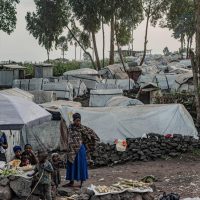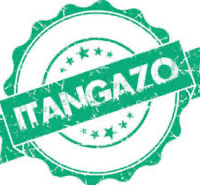During the first half of the year, Rwanda recorded a low growth rate of 2.9% on average mainly due to low growth of the industry and services sectors as activity in construction recorded a deceleration of -5.5%, attributed to the completion of large projects, and trade performance was at -9.5% compared to a 5-year average of 7%.
Discussing the outlook on Rwanda, IMF Mission Chief Laura Redifer pointed out that despite the downward revision of growth, it is expected to pick up in 2018, positively affected by a noticeable improvement in the external sector.
“The main mode of policy adjustment was allowing the Rwanda Franc to depreciate, in nominal terms, which offset real appreciation that had taken place over the course of 2014-2015. This encouraged dampening of import demand and allowed more competitive prices for Rwandan exports,” Redifer noted.
Rwanda took up Made in Rwanda initiative as a means to offset the growing trade deficit, but also in shore up exports and create jobs. Indeed, Rwanda’s trade deficit decreased by over 25% in the first six months of 2017 as a result of increased value and volume of exports and reduction of imports.
Speaking at the Seminar to discuss Regional economic Outlook, the Minister of Finance and Economic Planning Claver Gatete noted that return increased growth levels is a result of deliberate efforts that are beginning to pay off.
Minister Gatete highlighted investments tourism, export diversification, creation of industrial parks and investment in human capital as well as the development of the financial sector as some of the initiatives that will create growth.
“There has been improved performance of agriculture through increased productivity and farmer yields in priority value chains, we expect Industry sector growth, as construction activities are expected to rebound in 2018 and services sector is expected to recover due to government spending,” Minister Gatete said.
The Governor of the National Bank of Rwanda John Rwangombwa noted that despite lower growth this year, there are positive signs that show the economy is on the up.
“If you look at the performance of international trade, we have reduced the trade deficit, which was a key challenge to the development performance,” Governor Rwangombwa said.
Over the medium term, IMF anticipates Rwanda’s growth to return to its historic rates, which are quite a bit higher than peer countries. However, IMF notes that it would depend on maintaining high level of investment spending, which has been increasingly financed by domestic resources.
The IMF team is currently in Rwanda to discuss the economic program under the 8th Review of Policy Support Instrument and 3rd review of Standby Credit Facility.
The current review is taking place in an environment where the price shock to Rwanda’s main commodity exports of 2015 and 2016 (that had resulted in a significant loss of export receipts posing temporary but significant pressures on availability of foreign exchange) has eased and commodity prices have been on the rise again, with trade balance deficit reducing and exchange rate depreciation and Inflation continued to slow compared to last year.
The IMF Board approval is expected in January 2018.
The Express News










